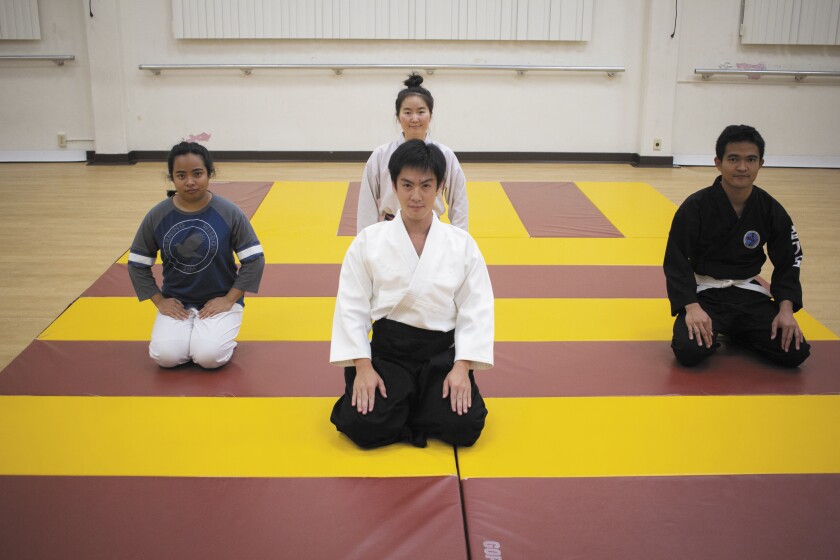
The Fūrinkazan Aikidō Dojo opened last Spring 2019, but it only became a club this Winter Semester 2020. Aikidō is a martial art different from others because they aim for the offender and the defender to be unharmed. The president of the Aikidō Dojo, Indra Luo, said Aikidō puts an emphasis on spirituality, psychology and mental health.
The Aikidō Association of America (AAA) describes the martial art as a “comprehensive system of throwing, joint-locking, striking, and pinning techniques, coupled with training in traditional Japanese weapons such as the sword, staff, and knife.” The AAA also notes Aikido as “non-lethal, non-disruptive, non-competitive [which leads to] harmony with ourselves and with our world.”
Starting the Laie Dojo
Luo, a biochemistry sophomore from Indonesia, said he has been practicing aikidō for 15 years. One of the reasons he came to BYU–Hawaii was there was an Aikidō Club. He said he was disappointed when he discovered the club had been shut down “because there was no membership and there was no one qualified to start the club.” Luo started the club this Winter Semester 2020, but the dojo has been in functioning since Spring 2019.
A cultural anthropology sophomore from the Philippines, Abish Tarrobago, joined the dojo before it became a club. She said they had to form a group to practice and found space in the Dance Studio. “If the Dance Studio was not available, [they practiced] in the grass areas or in the racquetball place.”
Luo said he originally disliked aikidō. However, he changed his mind after he learned aikidō puts emphasis on spirituality, psychology, and mental health. “One thing that keeps me wanting to learn is its emphasis that you have to be a good person, even when they hurt you. That thought keeps me drawn to it.” He also wanted future club members to be patient as learning aikidō is a lifetime pursuit.
What Tarrobago said she likes about the martial art is that it “wasn’t too physical. It’s easy for women to do it so we felt it was the martial art that is for us.”
Tarrobago is progressing through the belt system in aikidō. “I’m a yellow belt right now and it took me two months to do techniques. We do regular practices so we can achieve more. You don’t just hit people, you have to prioritize what will hurt the least, and that goes the same with school and life in general.
“It doesn’t just help us physically, but helps us with relationships and life in general.”
Other self-defense practice opportunities
EunBi Cho, a psychology senior from Korea, and Cindy Castro, a health and human performance junior from Taiwan, were glad there was an Aikidō Club so other students could have the opportunity to protect themselves. Cho explained she took the self-defense class. She was glad women were in the self-defense class learning to protect themselves.
Castro said she took the self-defense class by Jared Pere. “If I had more time [I would go]. According to Castro, in the self-defense class by Pere, “He would go through a ton of techniques and you would forget it. With a club, you can meet more continuously and have friends to practice with.”
She worried people may use these techniques to make fun of Asian cultures. “I would say I hope those who are not Asian can be more respectful.” She hopes people will know the origin of the martial arts they participate in. “Be aware and don’t say it is Asian altogether.”
Origins
Morihei Ueshiba created Aikidō in the early 20th century, according to the AAA. On the AAA website, Ueshiba is quoted, “To injure an opponent is to injure yourself. To control aggression without inflicting injury is the art of peace. Progress comes to those who train and train. Reliance on secret techniques will get you nowhere.”
AAA said of Ueshiba, “Aikidō was a path of self-development. He believed it could be a means for anyone, of any nation, to follow the same path. Aikidō is ‘shugyo:’ an intense physical and spiritual training to perfect human character and develop wisdom.”
